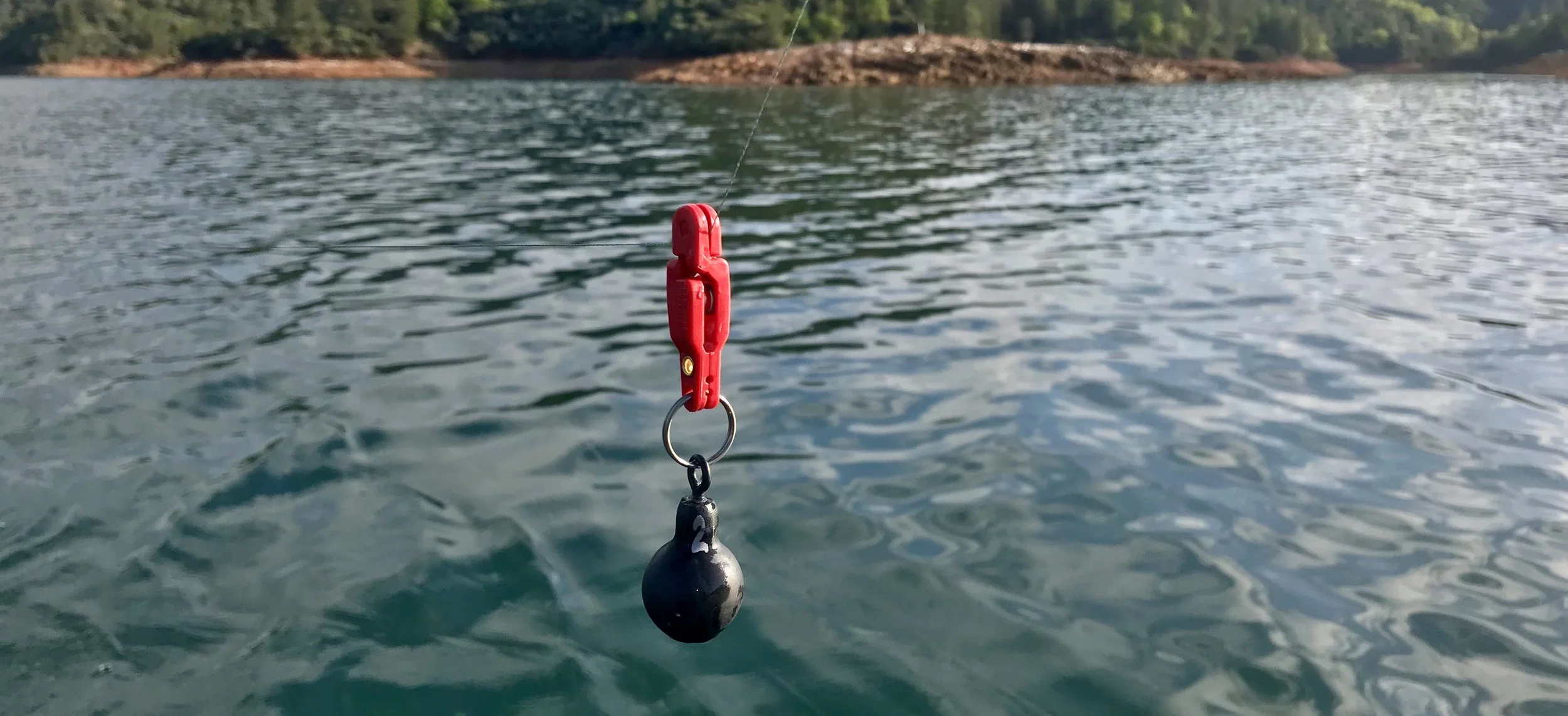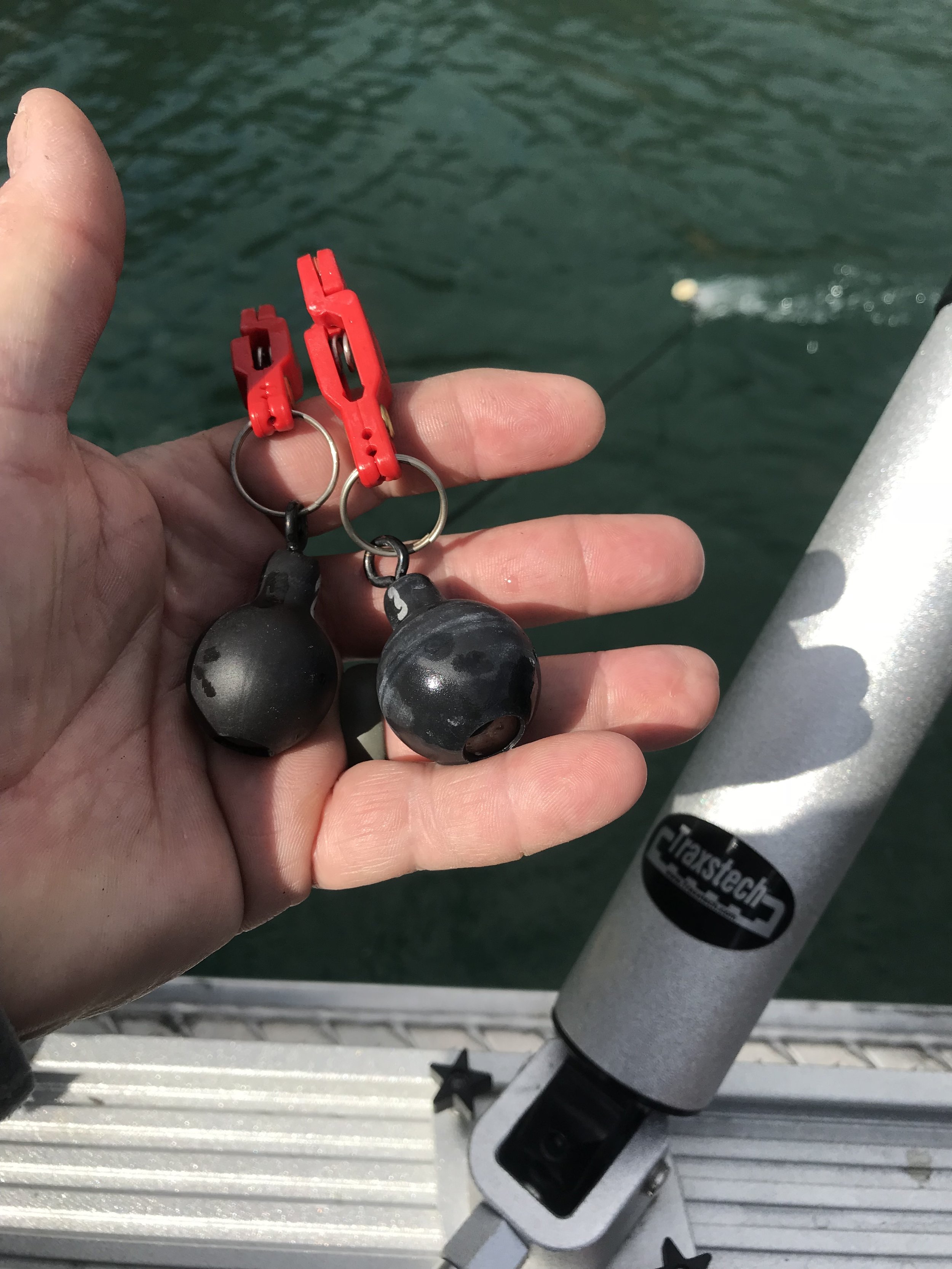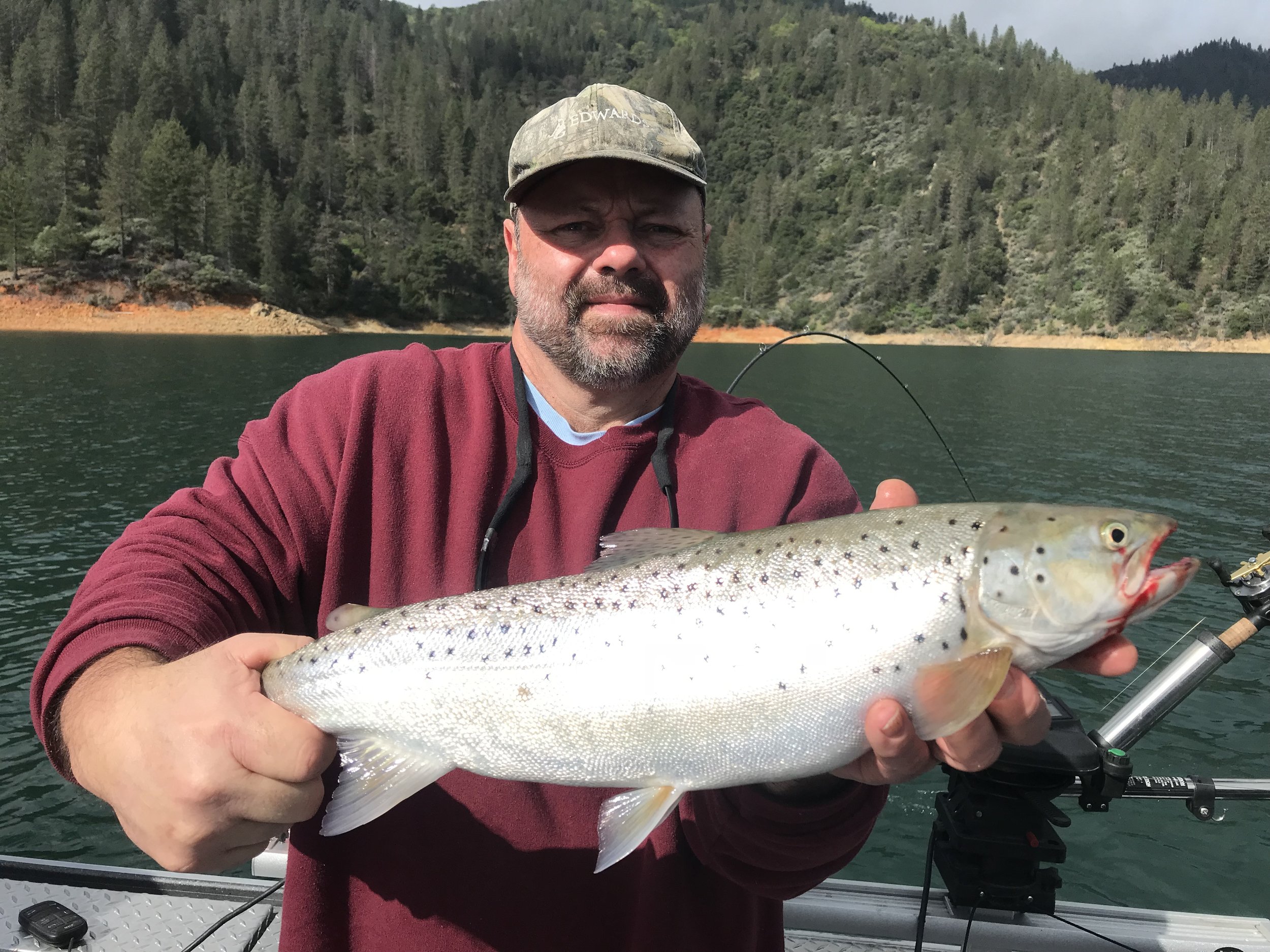Eco Line Weights are a very effective tool for catching fish on the lakes.
Redding area lake fishing
I've made a lot of changes to my fishing style in recent years, especially when fishing the lakes here in the Redding area. I've spent the majority of my adult life fishing and guiding for salmon and steelhead in both the Washington and California river systems. With uncertain times in the fishing industry, fishing guides have to adapt to the changing conditions by relocating their business or adjusting their focus on different species of fish that are available in the areas they currently operate. I've watched the Sacramento River fishing opportunities decline here in the Redding area for a number of years now and started to look for alternatives for running fishing trips here at home. With three large lakes located within a short driving distance from Redding, shifting my business focus became a no brainer. Whiskeytown, Shasta, Trinity, Keswick, and Lewiston Lakes all offer excellent fishing most of which is available year round.
Pinch line weights to catch more fish?
I've learned so much the past 4 years about fishing our local lakes and I'm finding great success on them all. I have shared many of these tricks and techniques I have learned through study and time on the water here on my website, fishing report sites, and on social media. The last few years have allowed me to spend even more time on our local lakes and I've stumbled on a particular weight system that has significantly increased my success when trolling, especially when fished in conjunction with inline side planers. Its such a great tool for catching fish, I felt like it would benefit the fishing community by sharing what I've learned about using them.
What are Trinidad Tackle's new Eco Line Weight System made of?
I'll start off by explaining what these weights consist of and why it is important to use the components you'll see in these weight system kits. First of all, we've all heard about the probable ban on lead fishing products in California, so with this in mind, the Eco Line Weights are made of non lead products, including the actual weights. The weights are made of molten steel that is poured into molds to create the 1 oz. thru 6 oz. weights. The weights are then powder coated and covered in a rubber type heat shrink as seen in the picture above. The red pinch pads are strong and have a nipple inside the pinch surface which secure the clips to the line without coming off. If you attach your line above the nipple, your Eco Line Weight won't fall off if you scrape bottom or fight a hot fish. The pinch pad is simply attached to the Eco Weight with a metal "key ring".
Trinidad Tackle Eco Line Weight attached to my main line before letting it out into the water while setting my lines back behind the boat.
How to use Eco Line Weights for trolling.
Trolling with Eco Line weights is simple and effective whether you are using them on a side planer line, downrigger line, or just on your rod line when trolling off the side or back of your boat. The 1-6oz. weights will obviously take your lines down to different depth when attached with aforementioned trolling methods. I first realized the effectiveness of the line weights when I started finding that my surface trolling lines when trolling the Optimizer spoons were not producing like my downrigger lines. Some conditions are such that you just won't find fish near the surface, like when the lake is flat and the sun is high in the sky. When fishing with line weights in the top 20' of the lake during the cold water periods of the year, your presentation takes on a whole new level of performance. I've caught more brown trout fishing weighted lines and inline Church Tackle side planers than any other method combined. Some times of the year I'll be using up to six side planers, especially early in the morning or when we have a little chop on the surface.
No matter which trolling technique i'm using, I attach all the weights the same way. I let out 50-60' feet of line behind the boat and then I attach the line weight to my mainline from the rod.. I then let the rest of the line out depending on how far I'm fishing behind the boat. Fishing shallow requires at least 130-150' of line behind the boat, especially with downriggers or rods hanging out the back when top lining. If you need to get down below the surface when trolling attach a 1 oz. weight and see if it gets your lures down in the strike zone. If not, go to a 2 oz. or even 3 oz. The weight, line diameter, and trolling speed will get varying results as far as depth goes so you'll have to play around with your equipment and trolling speeds to get your depth dialed in. I run 30# braid line and normally achieve about 10-12' feet of depth with a 2 oz weight and around 15-18' feet with a three oz. at 2.5 mph. It runs slightly shallower for each when I'm trolling Optimizer Spoons at a faster trolling speed. When you get your speeds and depth dialed in you will be able to target fish below the top 5 feet of the lake more efficiently and your success rate will surely increase. When you hook a fish, simply reel them in until your line weight is within reach of you or a boat mate, and take it off. Once its off, you can play your fish to the net weight free.
Finally, it is my opinion that these weights can be used by all trollers while on the lake. It can be used as a way to get your lines down in a kayak or from a big power boat. There is no longer a need to attach permanent weight systems or divers to your lines to get your lures down to where the fish are. They are hassle free and changing your weight size is a snap requiring easy on and off applications once you've found the depth the fish are biting. www.trinidadtackle.com will have these weight systems available in a week or so. Please visit their website or contact stan@trinidadtackle.com for more information. Ask for them at your local tackle retailer. If they don't have them, let them know you would like them to carry the Eco Line Weights. Thats the best way to let them know they are in demand.
7 of our 8 browns hooked last Sunday were hooked using Trinidad Tackle Eco Line Weights and inline Church Tackle side planers.





